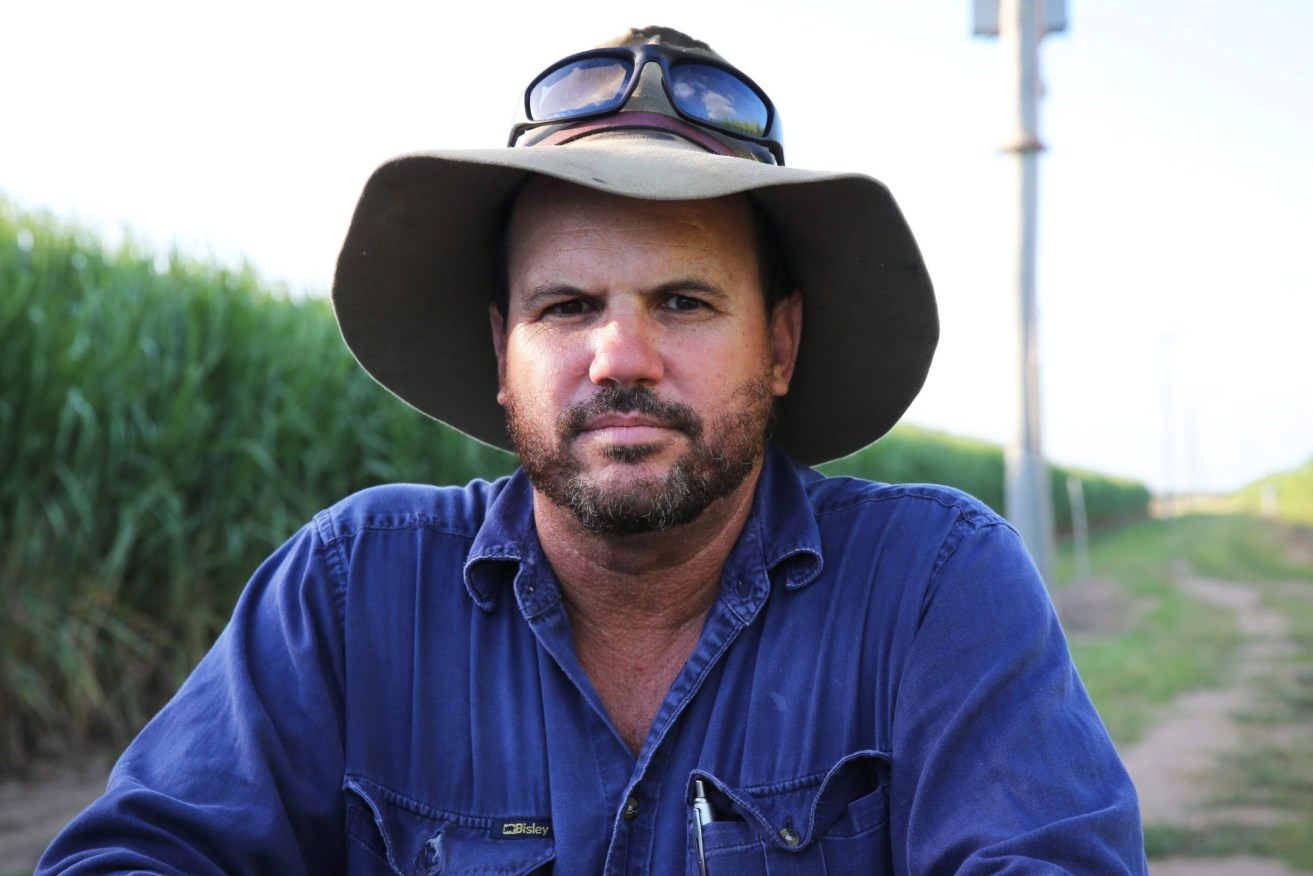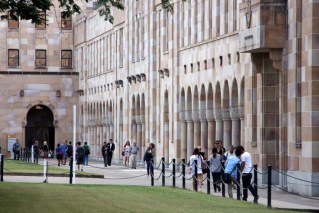Sweet redemption amid bitter news for farmers
Australia’s farm sector has taken a big hit to the bottom line at the hands of prolonged drought, but it’s not all bad news for farmers battling natural disasters, fluctuating global markets and the coronavirus spread.


Canegrowers chairman Owen Menkens, pictured on his north Queensland farm in the Burdekin, is upbeat about the new jet fuel opportunity. Image: Queensland Canegrowers).
A predicted drop in farm production this financial year has failed to sour the outlook for sugar cane growers who remain upbeat on the back of positive weather patterns and market signals.
As producers of the quintessential Queensland crop, cane growers have endured a volatile ride in recent years with disruption to processing arrangements, higher input costs to comply with regulations governing Great Barrier Reef protection and threats to demand in Western economies as rising obesity rates turn more consumers towards sugar alternatives.
It is an ironic twist that in a year when billions of dollars are expected to be wiped from the value of Australian farm production, cane growers believe 2020 will be the year to pay dividends.
“After a couple of years of disappointing rainfall right through the sugarcane industry, this season is looking much better and we’re feeling more optimistic,” said Canegrowers vice-chairman Owen Menkens from his Burdekin farm.
“The 2020 crop is growing well and there’s been a welcome rise in the world sugar price which had languished below our cost of production for most of last year.”
Drought hits farm value
Severe drought that continues to grip large parts of Queensland and NSW is the main culprit behind plummeting farm incomes, according to Commonwealth agricultural commodity forecaster ABARES.
The federal agency’s chief commodity analyst Peter Gooday provided a sombre outlook for the farm supply chain in Canberra on Tuesday, detailing a multibillion-dollar hit to the value of Australian farm production.
He has blamed prolonged drought as the biggest factor driving down figures from a record high of $63.8 billion in 2016-17 to a forecast $59 billion in 2019-20.
For grain growers, it means average farm incomes have fallen for a second straight year by 8 per cent in 2019-20 to $153,000 per farm, about 4 per cent below the 10-year average.
Australia is also now running the smallest beef cattle herd in 30 years and the lowest sheep flock since 1904, with production 12 per cent lower than five years ago.
However, bushfires that scorched thousands of hectares over summer and captured world attention have had a negligible impact on farming’s bottom line.
“The bushfires and smoke impacts in some areas were locally devastating,” he said.
“The majority of Australia’s agricultural production and exports, however, takes place outside the affected areas.”
With more rain forecast to drench the Queensland and NSW interior over coming days, offering a reprieve to drought-ravaged farmers, ABARES is predicting any recovery will be tempered by the impact of coronavirus shrinking demand for Australian agricultural exports, especially in hard-hit China.
“Livestock prices medium-term are expected to soften but remain high, although coronavirus poses a significant risk as Chinese demand for agricultural products has declined under restrictions put in place to contain the outbreak, particularly for items like seafood and wine,” Gooday said.
“Meat and livestock prices have stayed high as African swine fever (ASF) has decimated China’s swineherds, driving red meat prices up and requiring Chinese consumers to look elsewhere. Without those good prices, this year would look a lot worse.”
Dairy rebounds
The economic forecast is not all bad news.
Average cash incomes nationally for about 73 per cent of the nation’s dairy farmers, who have suffered under poor farm gate returns since the supermarket milk discount war of 2011, should increase to $165,000 per farm from $120,100 in 2018–19.
“Those gains come from comparatively low levels in Queensland, parts of Victoria and New South Wales, and drought-related falls in milk production plus high feed and irrigation costs are constraining improvement,” Gooday said.
Gooday said he expected the grains and oilseeds sectors to rebound quickly, but livestock production will take longer, with forecasts suggesting 2024-25 will still be 8 per cent below the 2014–15 peak.
Australian sugar production, the majority of which is grown in Queensland with some in northern NSW, is expected to average about 4.5 million tonnes.
Competing on a global market against other countries – mainly developing economies with lower costs of production – Australia is still expected to remain competitive due to its processing efficiency, proximity to East Asian markets, vertical integration with overseas refineries and free trade agreements.
Marketing sugar in a world environment where trade is rarely transparent and equitable remains a sore point with the Canegrowers deputy and some of his colleagues overseas.
“One big challenge that remains though is India’s export of subsidised sugar, which Australia and other countries are challenging in the World Trade Organisation,” Menkens said.
The outlook for other commodities with significant footprints in Queensland include:
Horticulture: Extreme heatwaves and bushfires over summer causing poor growing conditions, low water availability and supply channel disruptions have contributed to higher prices of most vegetables. In 2020–21 the value of Australian horticultural exports is forecast to fall as a result of increased competition in the Chinese market and decreased Chinese seasonal demand due to the spread and management of the coronavirus.
Wool: The Eastern Market Indicator (EMI) price for wool is forecast to be lower in 2019–20. Superfine, fine and medium micron wool prices will be supported over the medium term to 2024–25 by growing demand for woollen apparel. Slow recovery in Australian and global merino wool production is expected to limit growth in the world supply of apparel wool. Improved seasonal conditions in Australia are expected to restore wool fibre quality. This will support recovery in superfine wool price premiums.
Cotton: The world cotton indicator price is forecast to average US76.5 cents in 2019–20, down from US84.4 cents in 2018–19. Increased global production of cotton, high stock levels and competition from synthetic fibres such as polyester are expected to keep cotton prices near current levels in the short and medium term.
Pork: Over-the-hook pig prices in Australia are expected to remain historically high to 2024-25, but they will fall gradually from the peaks reached in 2019–20. African swine fever (ASF) continues to affect supply as it spreads across Asia and into wild pig herds. Countries such as China will rely on imports of pork and other substitute proteins over the short to medium term. High pork prices will encourage a supply response in countries that are able to increase their production capacity.
Chicken: Over the 10 years to 2017–18, retail prices for chicken meat fell on average by 2 per cent per year in real terms. Retail prices are estimated to have risen by 1.2 per cent in 2018–19 and are expected to remain at similar levels in 2019–20 due to high prices for domestic feed grains. Over the medium term, real retail prices are expected to resume a downward trend due to increasing productivity and production.












